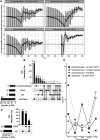Cardiovascular Toxicities Associated With Hydroxychloroquine and Azithromycin: An Analysis of the World Health Organization Pharmacovigilance Database
- PMID: 32442023
- PMCID: PMC7365677
- DOI: 10.1161/CIRCULATIONAHA.120.048238
Cardiovascular Toxicities Associated With Hydroxychloroquine and Azithromycin: An Analysis of the World Health Organization Pharmacovigilance Database
Keywords: azithromycin; cardiotoxicity; hydroxychloroquine; phamacovigilance.
Figures

References
-
- Jakhar D, Kaur I. Potential of chloroquine and hydroxychloroquine to treat COVID-19 causes fears of shortages among people with systemic lupus erythematosus. Nat Med. 2020;26:632. doi: 10.1038/s41591-020-0853-0. - PubMed
-
- Salem JE, Manouchehri A, Moey M, Lebrun-Vignes B, Bastarache L, Pariente A, Gobert A, Spano JP, Balko JM, Bonaca MP, et al. Cardiovascular toxicities associated with immune checkpoint inhibitors: an observational, retrospective, pharmacovigilance study. Lancet Oncol 2018191579–1589doi: 10.1016/S1470-2045(18)30608-9 - PMC - PubMed
-
- Salem JE, Yang T, Moslehi JJ, Waintraub X, Gandjbakhch E, Bachelot A, Hidden-Lucet F, Hulot JS, Knollmann BC, Lebrun-Vignes B, et al. Androgenic effects on ventricular repolarization: a translational study from the International Pharmacovigilance Database to iPSC-Cardiomyocytes. Circulation 20191401070–1080doi: 10.1161/CIRCULATIONAHA.119.040162 - PMC - PubMed
-
- Woosley RL, Heise CW, Gallo T, Tate J, Woosley D, Romero KA. QTdrugs List. www.CredibleMeds.org. Accessed June 29, 2020.
-
- Funck-Brentano C, Salem JE, Nguyen LS, Drici MD, Roden DM. Response to the editorial “COVID-19 in patients with cardiovascular diseases”: Covid-19 treatment with hydroxychloroquine or chloroquine and azithromycin: a potential risk of Torsades de Pointes. Arch Cardiovasc Dis 2020113367–368doi: 10.1016/j.acvd.2020.04.001 - PMC - PubMed
Publication types
MeSH terms
Substances
Grants and funding
LinkOut - more resources
Full Text Sources

